Sept 8, 2025 Deception Bay

We took a late morning walk along the Bay Esplanade from the mangrove natural area towards town.

Enjoying the view of the open bay from convenient lounge benches.

Later in the day we walked the same area to find the tide had gone out, leaving a huge mudflat! Hence the name “Deception Bay”. An early English explorer entered the bay in 1823, believing it was a river due to the shallow, wide waters. Eventually realizing his mistake he named it Deception Bay. The name stuck and was later applied to the surrounding community after settlement began. The bay itself is now named Moreton Bay.
Sept 7, 2025 Flying North.
We took the train back to Sydney and spent one night near the airport
to catch a morning flight to Brisbane
where we rented a car for our exploration of Queensland.
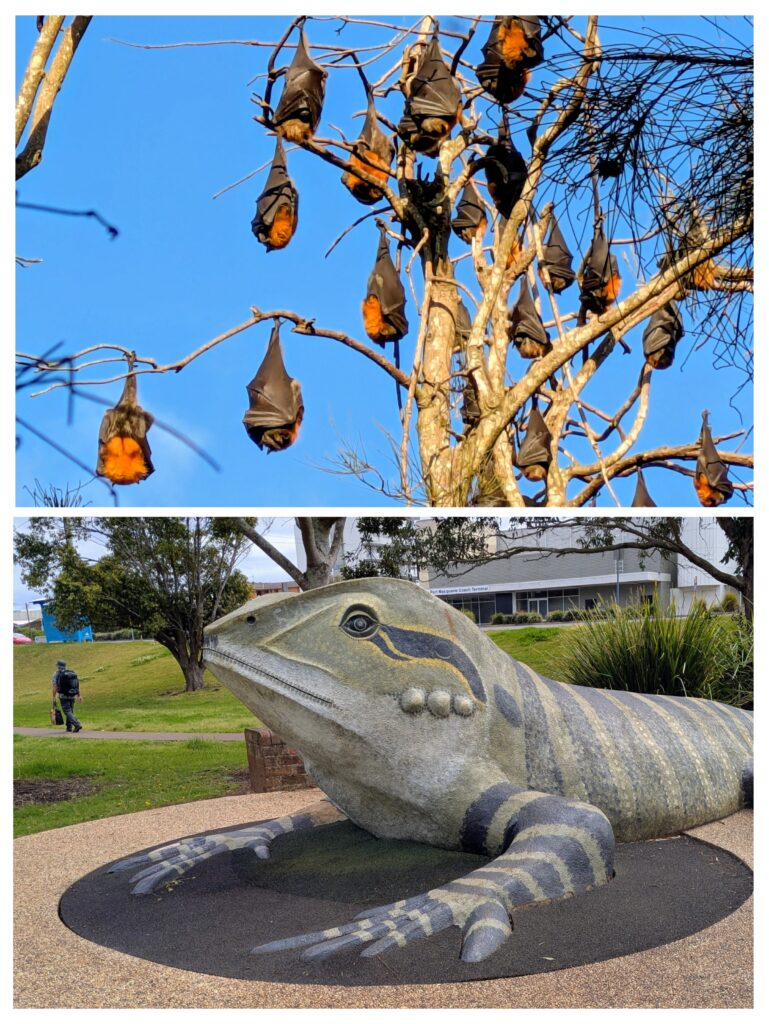
One last walk through the flying fox colony in Kooloonbung Creek Nature Reserve ,in Port Macquarie, and past the sculpture to catch our bus, then train into Sydney.
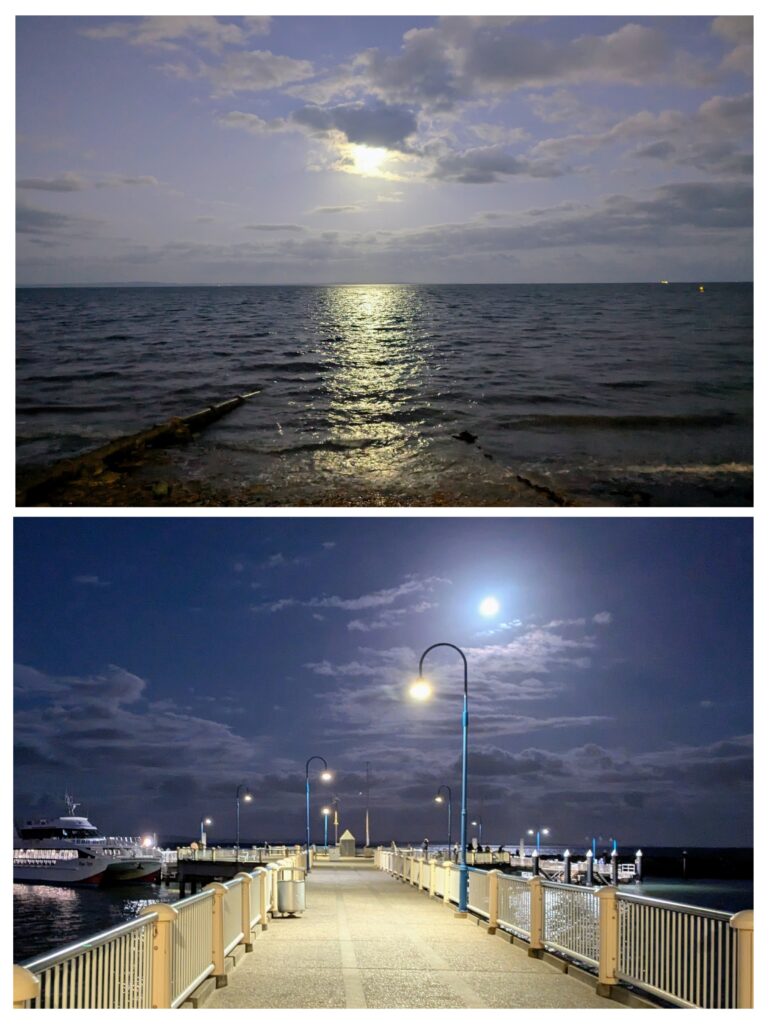
In Brisbane we got our rental car and drove an hour and a quarter to our Airbnb in Deception Bay. After grocery shopping we took an evening walk along the waterfront near the Redcliffe Jetty.
Sept 4, 2025 Another Coastal Walk
We caught a public bus to near the Tacking Point Lighthouse to begin our 5 mile coastal walk on a beautiful sunny and slightly breezy morning.
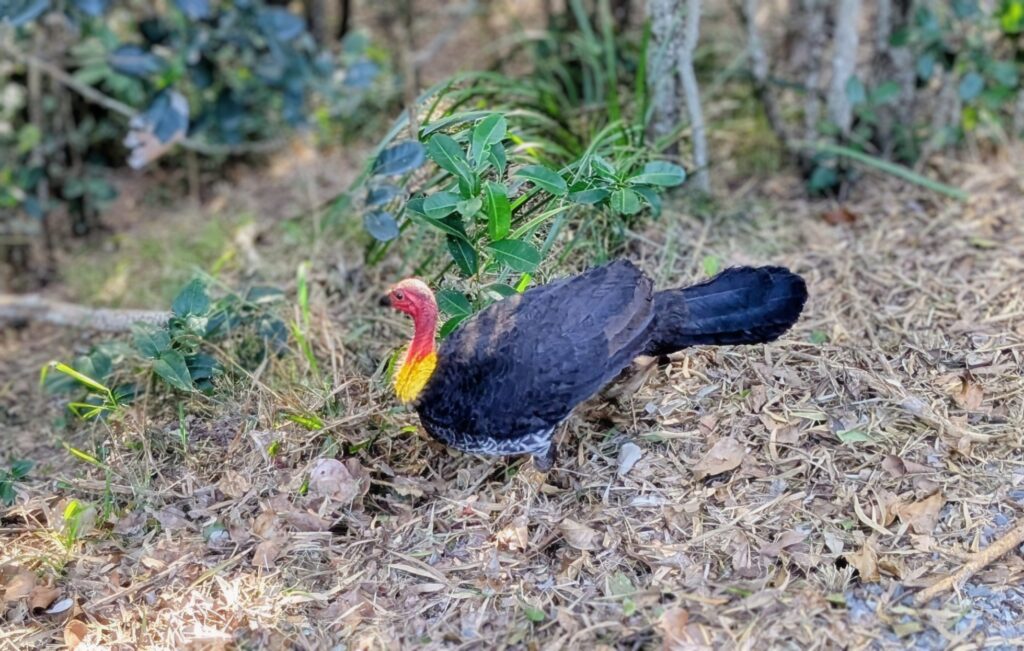
We were greeted at the trailhead by an Australia brushturkey, busy scratching up forest duff for nestbuilding. A colorful and similar looking bird to an American turkey, but not related at all.
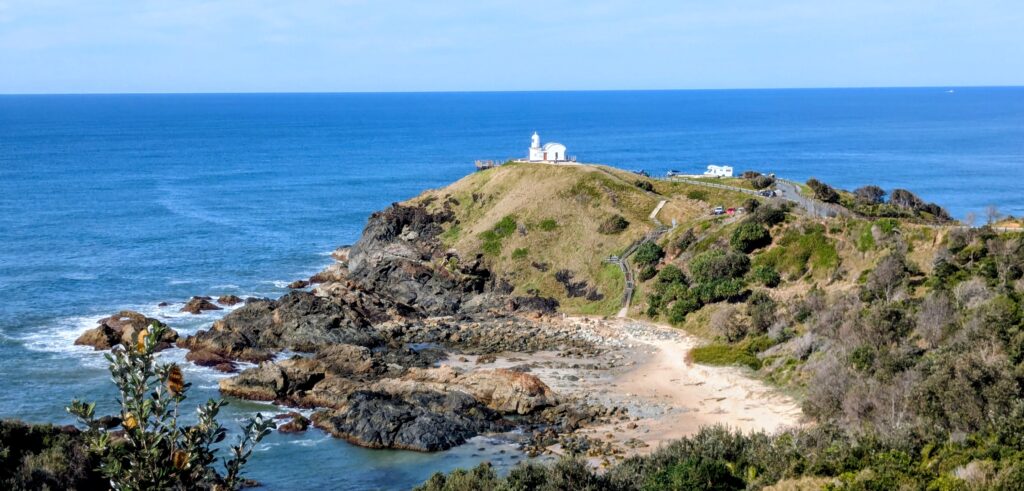
We looked back at the Tacking Point Lighthouse as we started down the track, going from beach to beach back into the main area of town.
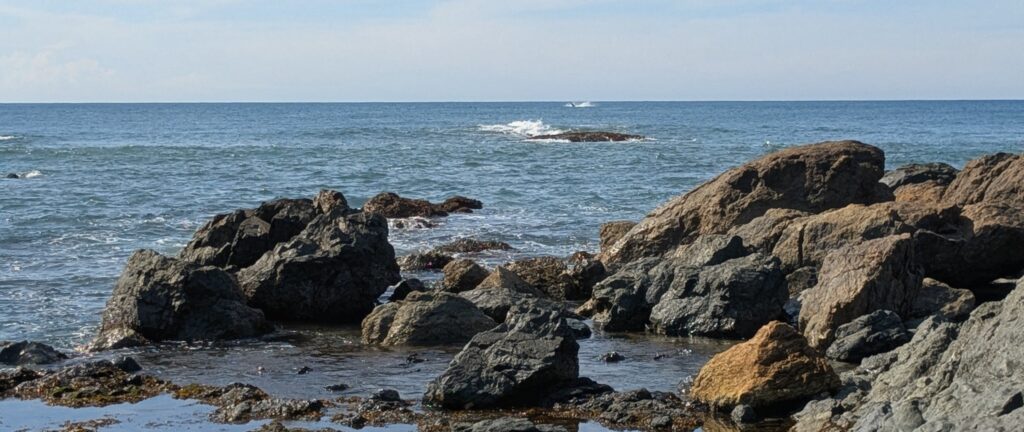
At every beach we stopped to watch the whales passing by, sometimes breaching, but mostly fin-slapping the water, like this one above the furthest rock, just below the horizon. You can just see the small splash as the fin hits the water surface. We spotted 9 whales at one lookout point!
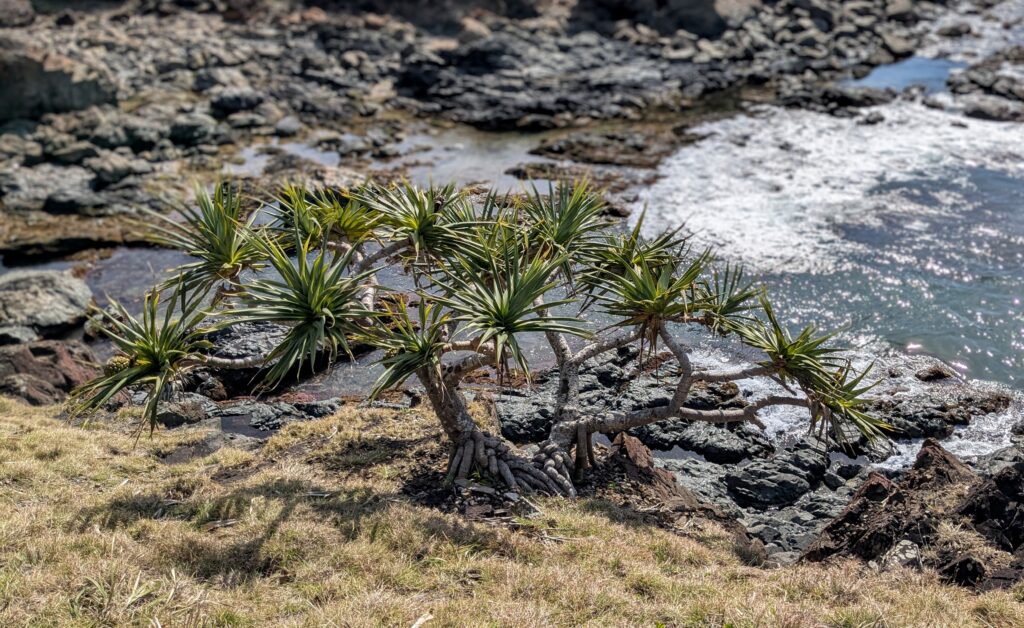
These pandanus trees growing on the rocky cliffs along the beaches are fascinating! Growing in tropical and subtropical zones in the Pacific mainly, they are used for everything from food to shelter, woven baskets, and clothing. The ‘stilt roots’ grow down from the branches to stabilize the tree.
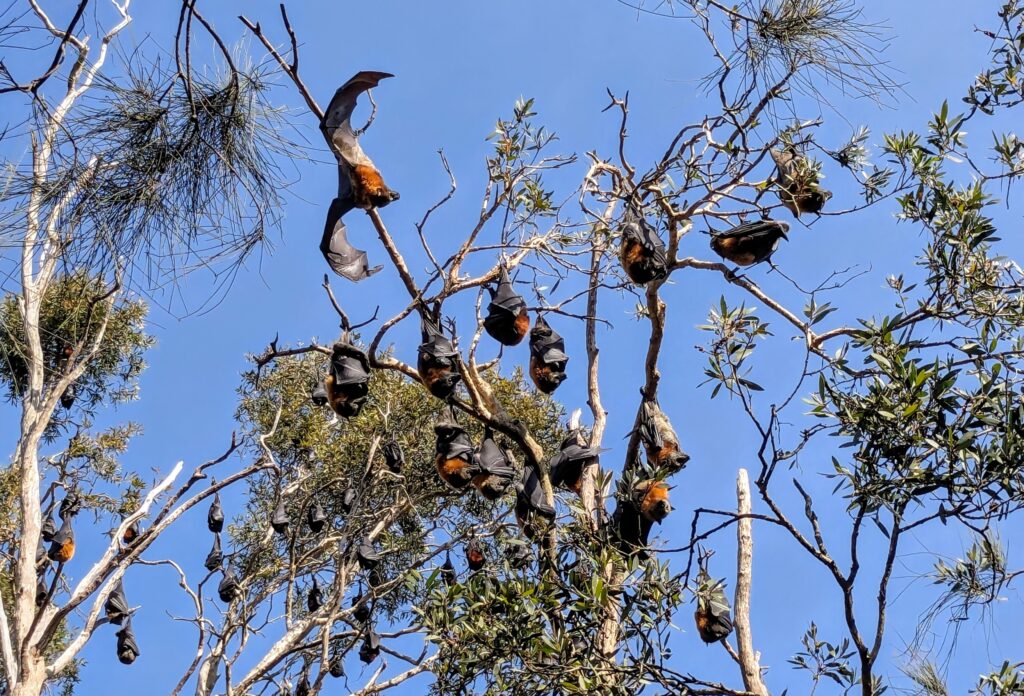
We completed our hike at the tiki bar in town at the end of the coastal walk. Refreshed with a beer, we walked through the Kooloonbung Creek Reserve and got another good look at the bats!
Sept 3, 2025 More Port Mac Exploration
Our host offered to show us a few interesting sites around town and some further afield!
He started out taking us to the Tacking Point Lighthouse, one end of the coastal trail.
Then we headed south to a higher point at North Brother Lookout.

top pic; Looking east toward the little town of North Haven from North Brother Lookout.
bottom pic; looking west towards Middle Brother Mountain beyond Watson Taylors Lake. There is a South Brother mountain as well, out of the picture!
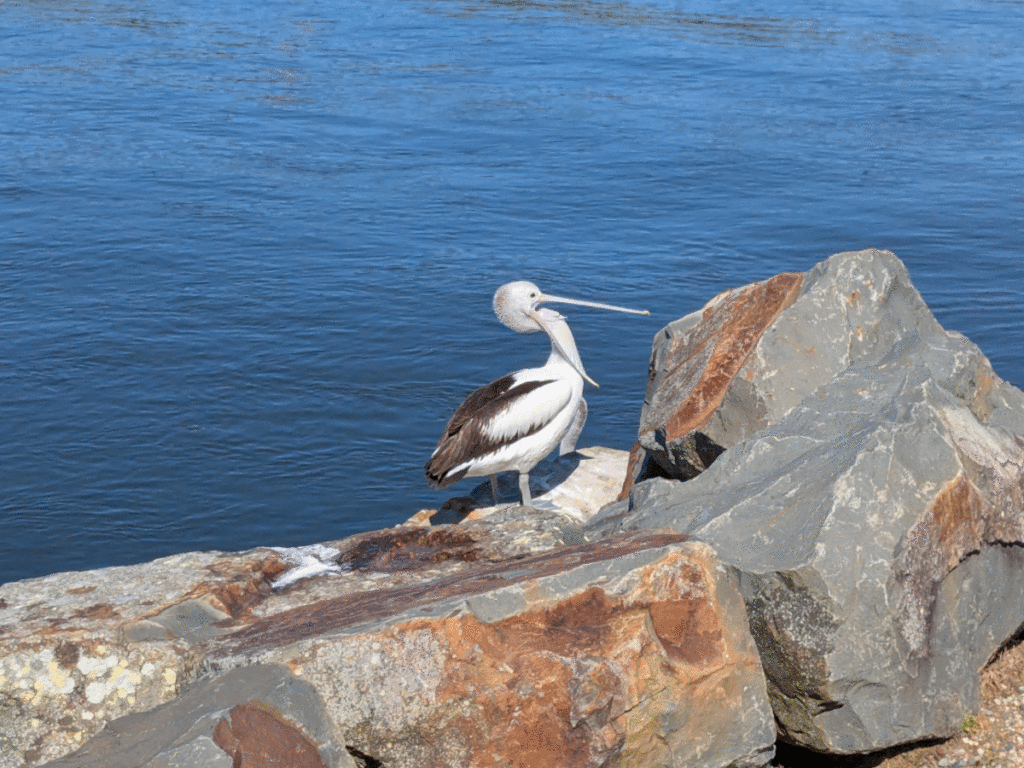
We descended to North Haven and saw the beach where our host used to go surfing until he found out how many sharks frequent the area due to the fishermen cleaning their catch nearby! The pelicans like the fish cleaning station also!
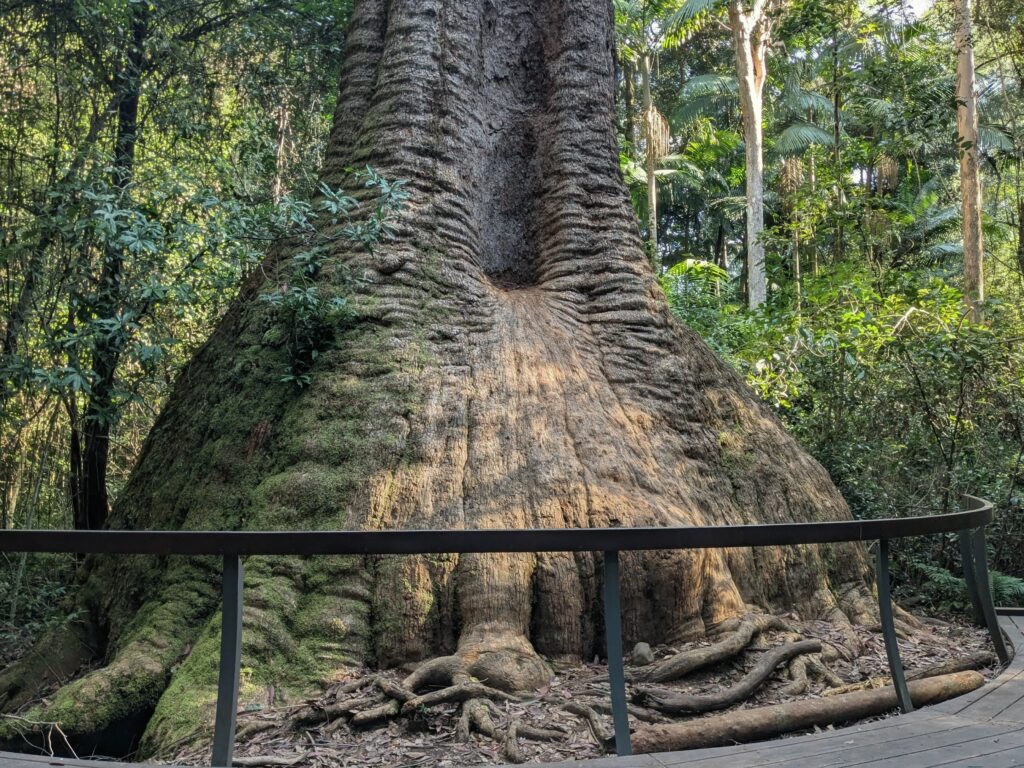
After lunch we headed into the woods to find “Old Bottlebutt”, the largest Red Bloodwood tree in the southern hemisphere, with a girth of 16 m (over 52 feet)!
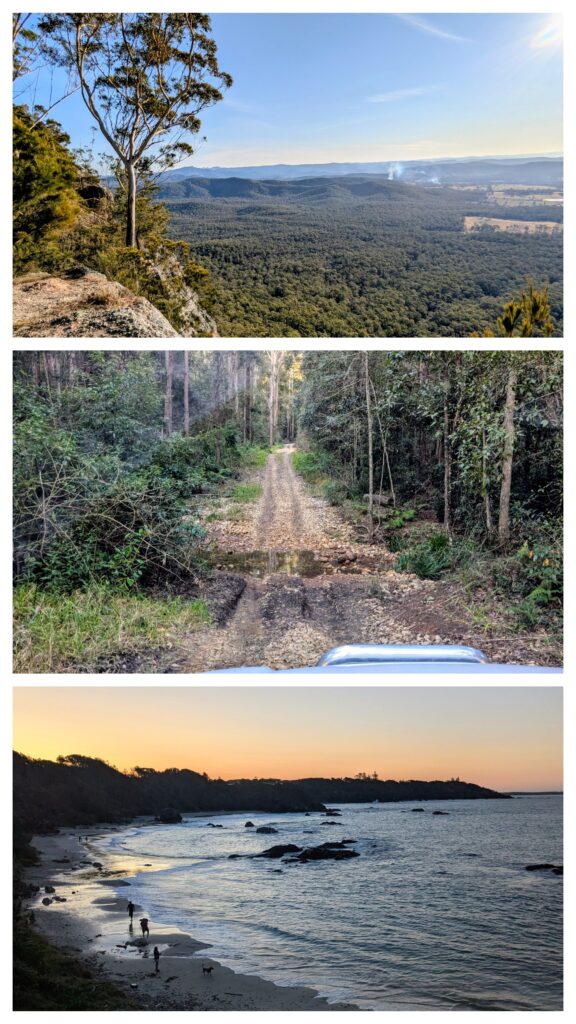
4 wheeling through the forest, our host took us to Bago Bluff on Rollover Road, for a scary overlook down into a eucalyptus forest where we spotted some fires (one turned out to be a bush fire!). He returned us safely to town and we watched dogs frolicking in the evening surf at the off-leash beach close to where we started the day!
Sept 2, Evening Bats
We went out at sunset to the site of the flying fox roost
to watch them waking and flying off on their nightly foraging
for fruit and flower nectar. We stayed after dark on the moonlit
night to see the last few bats flying off!














